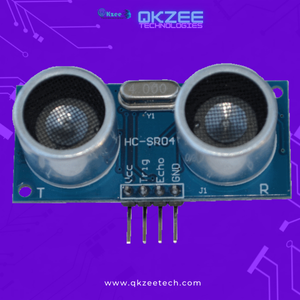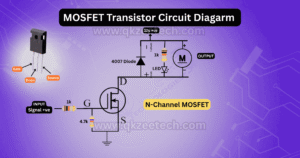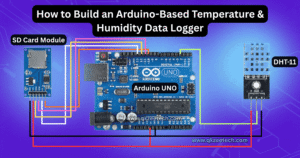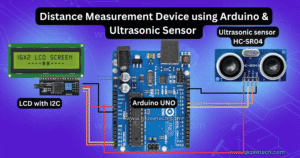Comprehensive Guide to Ultrasonic Sensors: Applications, Arduino Integration, and Comparison with PIR Motion Sensors
Introduction to Ultrasonic Sensors
Ultrasonic sensors are the hidden gems of the sensor world. These nifty devices use sound waves to detect objects and measure distances, making them perfect for a wide range of projects for beginners, students, and engineering enthusiasts. Whether you’re building an autonomous robot or designing a parking sensor system, ultrasonic sensors can be the secret ingredient to take your DIY projects to the next level. In this article, we’ll explore what ultrasonic sensors are, how they work, and how to use them with Arduino. We’ll also dive into the differences between ultrasonic sensors and PIR motion sensors to help students, especially in Lahore, Pakistan, find the best way to integrate these technologies into their school and final year engineering projects.
What is an Ultrasonic Sensor?
An ultrasonic sensor is a device that measures the distance to an object by using sound waves. It emits a high-frequency sound wave and measures the time it takes for the sound to bounce back after hitting an object. Ultrasonic sensors are great for students and hobbyists working on DIY projects because they can “see” objects without needing physical contact. Plus, they’re widely available at cheap prices online from stores like QKZ Tech in Lahore, Pakistan, and perfect for beginners learning about sensors and modules.
How Do Ultrasonic Sensors Work?
The principle behind ultrasonic sensors is simple but effective. They rely on sound waves at frequencies higher than the human ear can detect—usually above 20,000 Hz. The sensor emits a sound pulse, waits for it to reflect from an object, and measures the time taken for this round-trip journey. This makes ultrasonic sensors easy for students to understand distance measurement concepts in their projects.
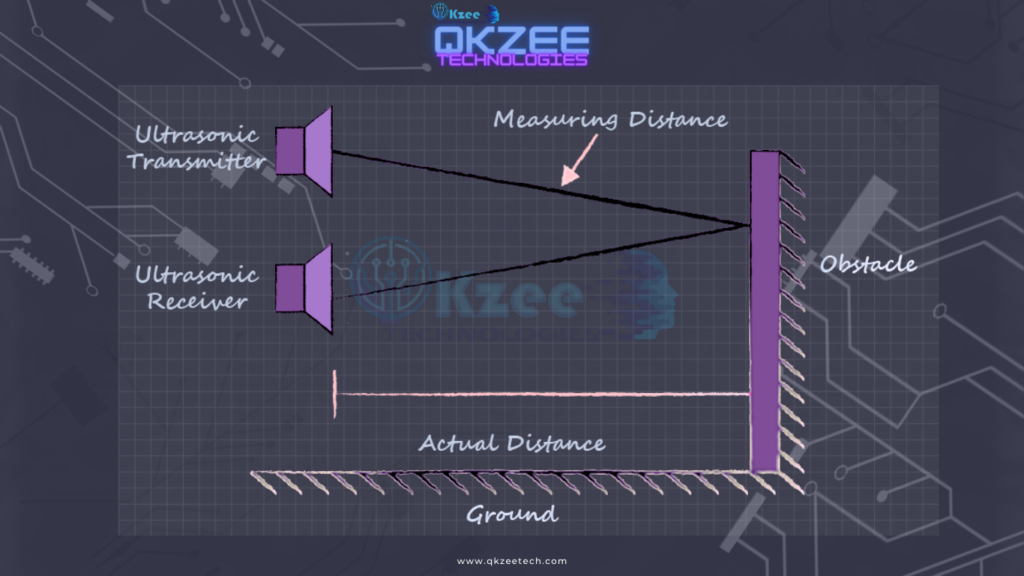
Basic Principle of Sound Waves
Sound travels through the air at roughly 343 meters per second. By knowing the speed of sound and the time it takes for the sound pulse to return, the sensor calculates the distance to the object. The formula used is:
Distance = (Time x Speed of Sound) / 2
This makes learning easy for beginners and science students who want to explore simple yet practical engineering principles.
How Distance is Measured Using Ultrasonic Waves
Ultrasonic sensors send out a trigger pulse, typically lasting around 10 microseconds. When the sound wave hits an object, it reflects, and the sensor listens for this echo. The time difference between sending the pulse and receiving the echo is proportional to the distance. This is an effective solution for school and DIY projects where students need an easy way to measure distances without complex sensors.
Key Features of Ultrasonic Sensors
- Non-contact measurement: They don’t need to touch the object to measure its distance, making them ideal for students and engineers.
- Wide detection range: They can detect objects from a few centimeters to several meters, which is useful for various projects.
- Highly accurate: Perfect for precise measurements in engineering projects.
- Works in any lighting condition: They aren’t affected by light, making them ideal for indoor and outdoor applications in Lahore, Pakistan.
Applications of Ultrasonic Sensors
Ultrasonic sensors are incredibly versatile and have entered numerous industries and projects. Here are some key areas where these sensors shine, especially for students and engineering projects:
Automotive Industry
In the automotive world, ultrasonic sensors are widely used for parking sensors. They help drivers detect nearby objects when parking by emitting an audible beep when the vehicle gets too close to an obstacle. Students can easily replicate this in their final year projects to showcase real-world applications of the sensor.
Robotics
Robots use ultrasonic sensors to navigate through environments and avoid obstacles. These sensors are an essential part of autonomous navigation systems, allowing robots to “see” the world without cameras. Robotics projects, whether for school or engineering students, can benefit greatly from ultrasonic sensors.
Industrial Automation
In industrial settings, ultrasonic sensors can monitor levels of liquids in tanks, detect objects on production lines, and control automated systems by providing real-time distance measurements. Students working on industrial or control system projects will find these sensors ideal for their automation modules.
Using Ultrasonic Sensors with Arduino
One of the best things about ultrasonic sensors is how easily they can be integrated with Arduino for DIY electronics and engineering projects. Whether you’re a student building an obstacle-avoiding robot or designing a parking assist system for your final year project, connecting an ultrasonic sensor to Arduino is straightforward.
Ultrasonic Sensor Pin Configuration
A typical ultrasonic sensor, like the HC-SR04, has four pins:
- VCC: Connect this to the 5V power supply.
- GND: This connects to the ground.
- Trigger: This pin sends out the sound wave.
- Echo: This pin receives the echo.
This simple pin configuration makes it an easy way for beginners to get started with sensor modules in their Arduino projects.
Step-by-Step Guide to Connecting Ultrasonic Sensors to Arduino
- Connect VCC to the 5V pin on your Arduino.
- Connect GND to the ground (GND) pin.
- Connect the Trigger pin to a digital pin (e.g., pin 7) on the Arduino.
- Connect the Echo pin to another digital pin (e.g., pin 6).
Once the sensor is connected, you can write a simple code in the Arduino IDE to measure the distance. Here’s a basic sketch to get you started, perfect for students new to Arduino projects:
const int trigPin = 7;
const int echoPin = 6;
long duration;
int distance;
void setup() {
pinMode(trigPin, OUTPUT);
pinMode(echoPin, INPUT);
Serial.begin(9600);
}
void loop() {
digitalWrite(trigPin, LOW);
delayMicroseconds(2);
digitalWrite(trigPin, HIGH);
delayMicroseconds(10);
digitalWrite(trigPin, LOW);
duration = pulseIn(echoPin, HIGH);
distance = duration * 0.034 / 2;
Serial.print("Distance: ");
Serial.println(distance);
delay(1000);
}
Explanation of the Code
This code sends out a trigger pulse, listens for the echo, and calculates the distance to an object. It’s one of the best and simplest ways for students to experiment with distance measurement in their projects.
Difference Between Ultrasonic Sensors and PIR Motion Sensors
Range and Accuracy
Ultrasonic sensors provide precise distance measurements, typically ranging from a few centimeters to several meters. PIR (Passive Infrared) motion sensors, on the other hand, detect motion by measuring changes in infrared radiation within a specific area. PIR sensors are great for detecting movement but don’t provide accurate distance information, making ultrasonic sensors a better choice for distance-based projects.
Suitable Applications for Each Sensor
- Ultrasonic sensors: Best for projects requiring precise distance measurements and obstacle detection.
- PIR sensors: Great for motion detection in security systems, like motion-activated lights or alarms, but not ideal for distance measurements.
Conclusion
Ultrasonic sensors are versatile, easy to use, and perfect for a wide range of applications. Whether you’re building an obstacle-avoiding robot, creating a parking assist system, or automating industrial processes, these sensors provide reliable, accurate measurements. When combined with Arduino, ultrasonic sensors open up endless possibilities for your DIY electronics projects.
Can ultrasonic sensors detect transparent objects?
Yes, they can detect transparent objects since they rely on sound waves, not light.
What is the maximum range of an ultrasonic sensor?
Most sensors have a range of 2 to 4 meters, though some can measure even farther.
Are ultrasonic sensors affected by temperature?
Yes, temperature can slightly affect the speed of sound, which may impact the sensor's readings.
Can I use ultrasonic sensors underwater?
Special ultrasonic sensors are designed for underwater use, but standard sensors are not suitable for such environments.
How accurate are ultrasonic sensors?
They are highly accurate, with most providing measurements within a few millimeters of the actual distance.

